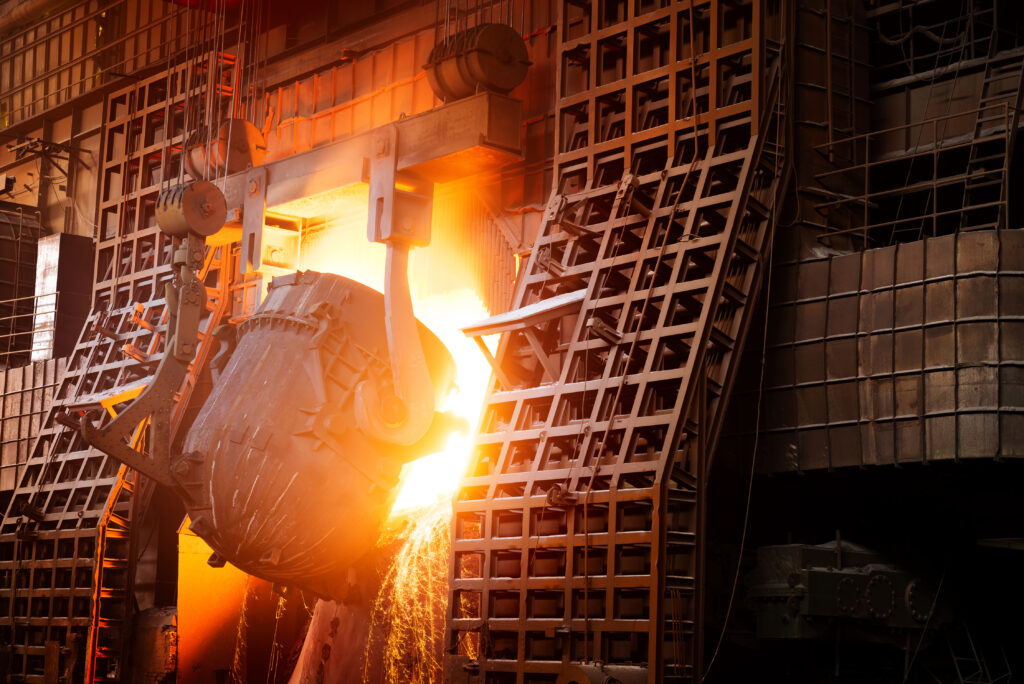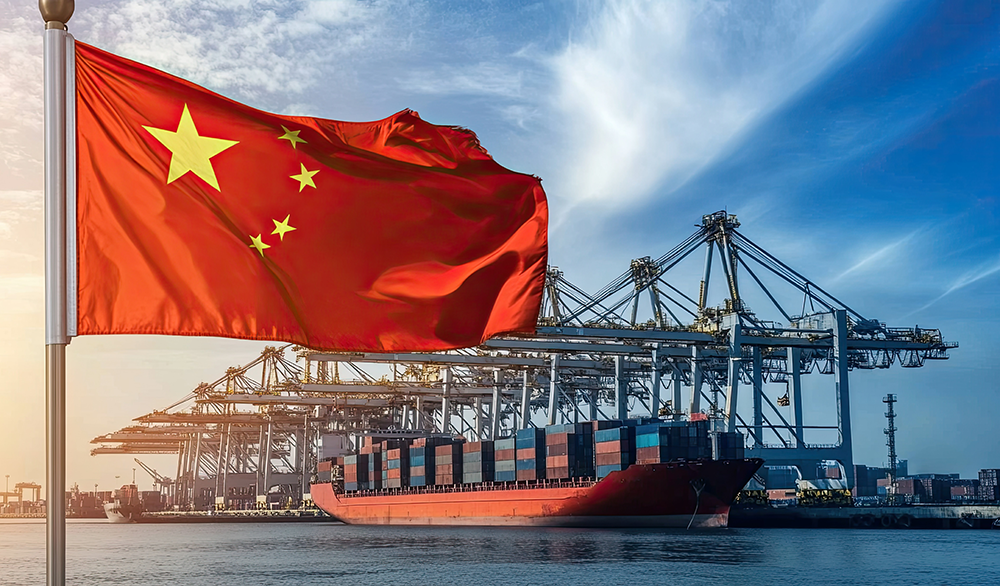Steel Dumping Tsunami Recedes: China’s Export Peak May Be Behind Us

Has the countdown to the end of China’s steel dominance in its own and international markets begun? Some steel industry reports seem to indicate that this is exactly the case. Many chalk this up to a variety of factors, including a shift in steel demand dynamics, China’s own poor internal demand, its efforts to turn to producing green steel and tariffs by other nations on cheap steel exports.
Know how to act, not just react, when steel markets fluctuate. Get weekly expert guidance steel market movements from MetalMiner’s newsletter.
Goldman Sachs Predicts Drop in Chinese Steel Exports
A new report by Goldman Sachs says the surge in Chinese steel exports has likely peaked, with rising trade barriers and a decline in domestic production slowing the momentum. As per a note issued by the bank, Chinese steel exports hit a nine-year high of 111 million tons (MT) last year, but are expected to decline by 3% in 2025 and drop sharply by up to a third in 2026. The bank noted that the main drag on exports is the growing number of anti-dumping investigations worldwide.

Meanwhile, China’s steel output is projected to decline by 2% this year and another 3% in 2026, bringing total production down to 946 million tons. That’s more than 10% below its 2020 peak, when Beijing initially began pushing for output cuts. By and large, Goldman’s report dovetails into what some other analysts have been saying about China steel since 2023.
Need to justify tariff-induced cost changes to your customers? Insights SV offers transparent data that can support your pricing decisions and maintain trust.
Iron Ore Futures Slip
Amid all this, the price of iron ore, a crucial raw material that withstood even the pressures of the U.S.-China trade war, is showing signs of wavering. For example, iron ore futures slipped on May 23, capping a week of losses driven by continued weakness in China’s property sector.
The most-traded September contract on the Dalian Commodity Exchange fell 1.24% during daytime trading to approximately US $99.73 (718 yuan) per metric ton. Meanwhile, benchmark June futures on the Singapore Exchange dropped 0.76% to $98.25 a ton, down 1.81% for the week. When exchanges opened on Monday, the price movement was almost the same.
Steel Industry Continues to Reel from Property Market Woes
From an internal standpoint, a lot of these issues remain tied to the country’s beleaguered property market. A Reuters poll suggests the slump in China’s property sector will likely persist through the year, with home prices projected to fall nearly 5% in 2025 and remain flat into 2026.
This ties in directly with what is happening in the export-focused steel industry. A report published in Business Standard echoes those of Reuters and Goldman Sachs, stating that unless China throws away its current steel plan and goes back to re-inflating the housing and infrastructure sectors, steel consumption in that country will continue to wind down.

Some steel mills have already curbed production in the face of that reality. In 2024, exports set near-new records, but that, too, is now dampened by fresh tariffs on cheap Chinese steel. Other nations have opened up anti-dumping investigations, with as many as 25 such probes starting up in 2024 alone.
Looking to track and predict steel price trends to plan out purchases? Subscribe to MetalMiner’s Monthly Metals Index Report and leverage it as a valuable resource for monitoring and forecasting price movements across 10 different metal industries, supporting your strategic sourcing efforts.
China’s Entire Steel Industry Could Shift
According to Bloomberg Intelligence analyst Michelle Leung, China’s steel exports could start to see a visible drop in 2026. Simultaneously, Goldman Sachs expects China’s dominant share of steel production to gradually shrink. The latter also warned that rising indirect exports—steel embedded in products like appliances and machinery—could still dampen demand in overseas markets.

Yet another report by research and data company Wood Mackenzie states that the steel sector had to deal with over-capacity of more than 50 MT, which could go up to 250 MT over the next decade. Titled “China Steel in Its Post-Peak Era,” the report talks of major shifts in China’s steel demand dynamics.
It claims construction’s share in steel demand will go down from as high as 60% to 48% over the next ten years. It likewise predicts that demand from the housing sector would decline to 23% in the long term from about 40%. Meanwhile, energy transition sectors, including wind energy, solar energy and electric vehicles, are projected to account for 10% of steel demand by 2030.
China’s New Focus on Emerging Sectors Puts Steel at Risk
According to a Wood Mackenzie report, China is shifting its steel focus toward emerging sectors to offset weakening demand in traditional industries. As one expert cited in the report put it, future demand is expected to be driven by electrification, the energy transition and artificial intelligence, all of which require significantly less steel. As a result, global steel demand is projected to decline to about two-thirds of its 2020 peak by 2050.
